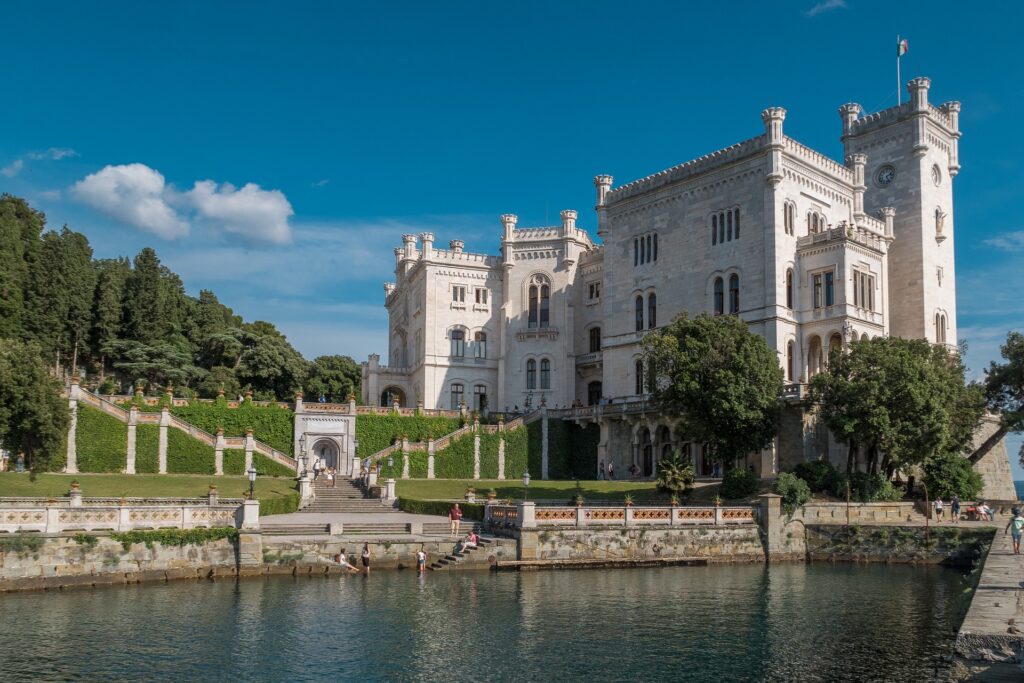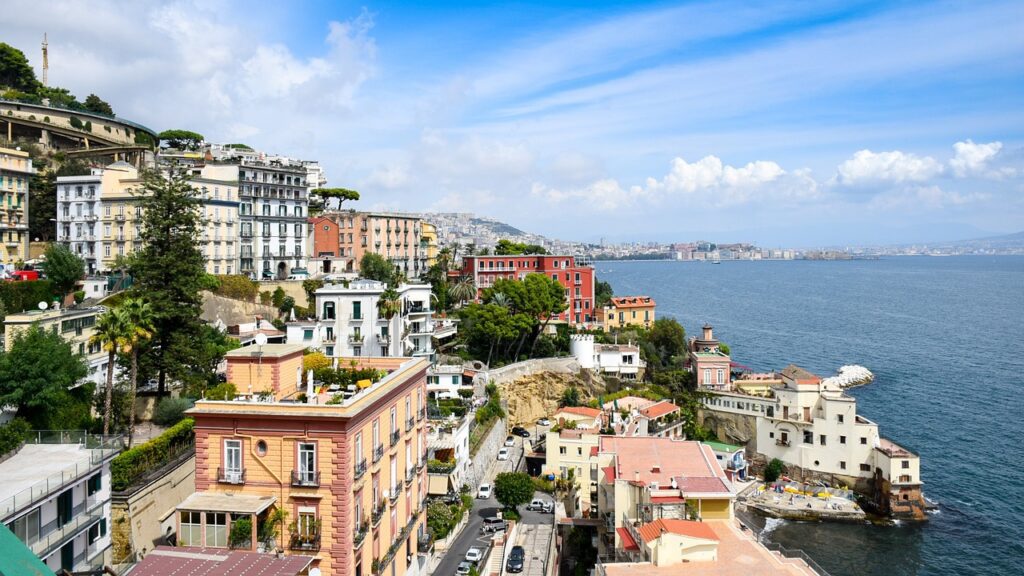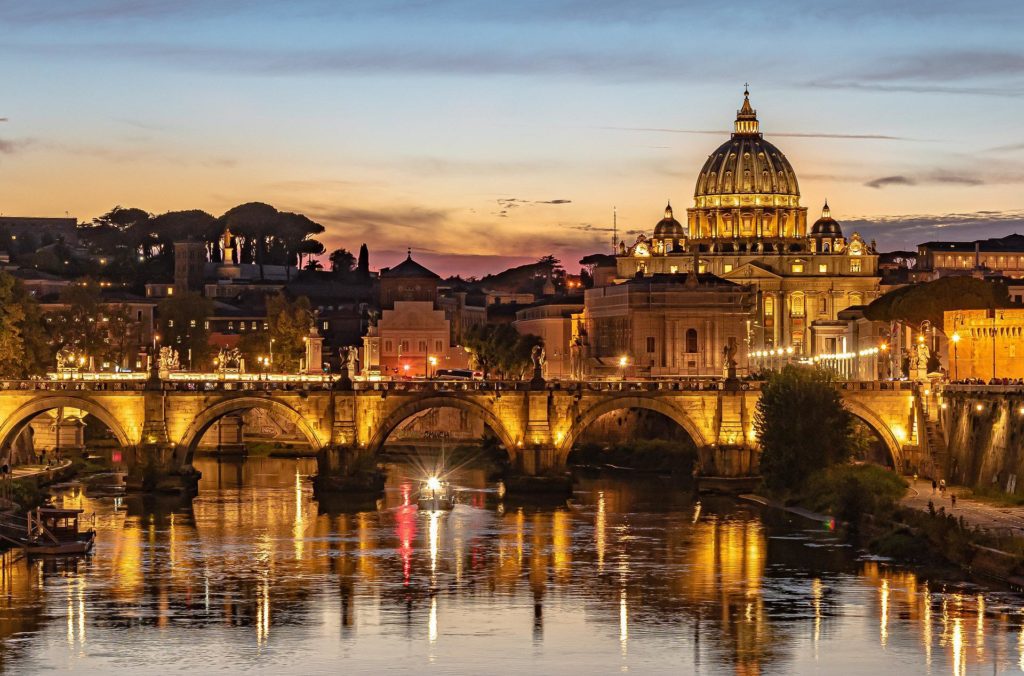This post was written by Evelyn Pearce, who is a freelance writer from Devon in the U.K.
A typical trip to Italy might encompass visits to Rome, Venice or the beautiful seaside town of Florence. As fascinating as these more well-known cities are, however, there are some lesser-known treasures to be found in Italy. One such gemstone is Trieste. Situated in the north-eastern most corner of Italy, Trieste is a seaport city that sits on a narrow passage of the country that borders with Slovenia.
Trieste – Breath-taking scenery
Trieste is a city on the edge in more ways than one; border-wise, it is about as close to its eastern neighbours as is possible, but it is also literally perched atop jaw-dropping limestone cliffs. Its elevated position means that it is vulnerable to high winds and the forces of the elements, but this just adds to Trieste’s weathered charm. The climb to the top of the city’s hill, San Giusto, is a popular quest for tourists, as it ensures the most magnificent view of the azure-blue Adriatic, as well as a panoramic view of the entire city.
Rich in history
This grandiose city is steeped with history; dating back as far as 3000 BC, the city’s rich past is clear in its architecture and scatterings of Roman ruins that are situated both in and around it. Despite its far-reaching ancient history, however, Trieste’s golden age was that of the Borgo Teresiano in the eighteenth and nineteenth centuries; the dominating period saw the birth of the city’s imposing Neoclassical architecture, which now forms the basis for the city’s centre and squares. Trieste is a city that has weathered many a political storm; its part in the nineteenth century ‘Irredentismo’ regime, a movement that sought to ‘redeem’ the Austrian-owned land of Trieste, led to much turbulence throughout the city. It was also at the centre of several disputes involving Slovenia and Yugoslavia in the twentieth century.
Buildings such as the Miramare Castle – known as the Historical Museum of the Castle of Miramare – and the Cathedral of San Giusto are well worth a visit and are perfect examples of the city’s imposing architecture. The former was built for Austrian Archduke Ferdinand in 1856, and the latter was rebuilt using the foundations of a sixth century Roman church. Another important building is the City Hall.
Vibrant culture
Trieste’s lively past is indeed reflected in its entertainment and culture scene. Many traditional cafes, restaurants and bars can be found dotted along the city’s historical cobbled streets and lining the seafront and piers. Nick-named the ‘gateway to the Balkans’, the merging of two cultures is clear in the city’s entertainment scene; the mix of cultures and history creates a cosmopolitan city with a lot to discover. In fact, Italian business paper, Il Sole 24 Ore, voted Trieste the most desirable city in Italy thanks largely to its nightlife and entertainment scene.
During the warm summer months, much of Trieste’s nightlife is outdoors, with locals typically choosing to frequent bars with outdoor terraces and patios. Trieste also has an enviable live music scene, with well-known bars such as Teatro Miela, situated near the seafront, which features a selection of the city’s finest music and theatre acts on a regular basis. A visit to Trieste would not be complete without sampling its jazz scene; bars such as La Casa della Musica regularly features local and national jazz acts, as well as an eclectic selection of other Italian music genres. Trieste also has an interesting trend for ‘moving parties’; due to complaints about nightlife noise from residents, the club scene has somewhat moved to that of ‘mobile clubs’ that move around various venues from week to week. Examples of these are Etnoblog and GruppoTetris, which host a series of unique club nights at impromptu venues.
Good time to visit
Now is a very good time to visit Italy for tourists from outside of the European Union; the Euro has remained weak in recent months, due largely to the ongoing economic turmoil in countries such as Cyprus. For non-EU visitors, this is good news as it means that travel money rates are very strong against currencies like the Yen, Pound and Dollar. Those that are thinking about visiting Italy from outside of the EU will therefore most likely find that their holiday spending money will go a lot further, and even hotel prices could work out cheaper than if they were to book a trip when the Euro was strong – there has never been a better time to take the plunge and book a trip to Trieste.
More Info




